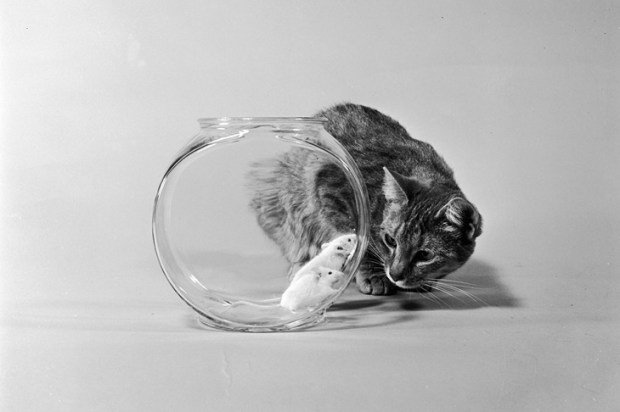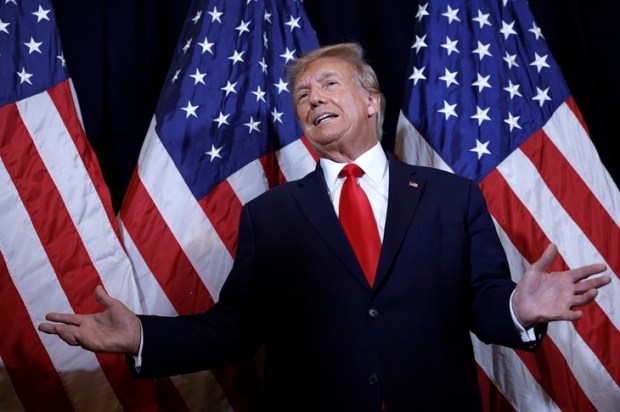The recent brouhaha over an unflattering portrait of Gina Rinehart is emblematic of a much larger problem with Australian democracy. For centuries, art represented the glory of what Thomas Carlyle referred to as the ‘great men’ of history. Sure, there were great women, too, but the term ‘men’ meant ‘people’ until recent times. Interestingly, men can now be women, and while the whole Woke ‘thing’ is not my focus here, it is the backdrop to my argument that art is failing ordinary Australians who just happen to be paying for it.
Much of the art of the pre-modern era was funded by patrons who appeared in the work of the early Renaissance painters. Artists, if they wanted to be financially successful, had to do what their customers wanted them to do. Probably not ideal from a democratic perspective, but patronage spurred on the greatest revival of the classical arts since the time of the Ancient Greco-Roman empires. Without patrons, particularly wealthy officials, clergy, and later merchants, the Renaissance may not have happened.
But the Renaissance produced its own orthodoxy that even impinged upon the works of Leonardo Da Vinci. I had the privilege of seeing the ‘other’ Mona Lisa (there are more than one) at the Museum of Art Pudong in Shanghai recently. The most famous Mona Lisa is at the Louvre in Paris. I found the Louvre version disappointing because it seemed so small and appeared to be so far away and so protected it was more disappointing than magnificent. But being able to stand up close and personal to the Prado’s Mona Lisa was inspirational.
I had a similar experience when I went to Petra in Jordan before visiting the pyramids at Giza. Although the experience of riding a camel from the ‘stables’ was worth the story, the pyramids and the Sphinx certainly do fill one with a sense of awe. But Petra set a standard that was difficult to surpass. In fact, the only other ancient place I held in such esteem was the Temple of Baal at Palmyra in Syria. Not because it was as spectacular as Petra, but because I have a photo of me standing in front of it dating from 2007.
ISIS destroyed the Temple of Baal in 2015 and we all lost something from that act of spite.
Art in the Romantic period of the early nineteenth century was radical in that it looked to the French and American revolutions as overcoming the oppression of the arbitrary treatment of individuals by monarchies. To be sure, the Romantics ignored little things like the Reign of Terror, but at least the point of the art was the liberty of the individual against arbitrary and oppressive hereditary regimes. Liberty Leading the People still evokes a sense of justification for standing up to one’s oppressors.
Later in the 19th Century, the Impressionists in France were up against the state yet again. A wonderful examination of the politics of Impressionism and the state in France by Jane Mayo Roos entitled Early Impressionism and the French State outlines the state’s ability to determine the answer to the question, ‘What is art?’ and the efforts of Gustave Courbet and later the Impressionists to challenge this state-controlled orthodoxy.
Gustave Courbet is one of my favourite painters. Not because I think his art is necessarily great, but the backstory to his rebellion against the Romantics and his focus on everyday objects and the development of Realism brought art to the common people. Courbet was a socialist and he paid dearly for his socialism. Unlike F. Scott Fitzgerald, who wrote about rich people because nobody wanted to read about poor people, Courbet was more in the same vein as Turgenev, whose A Sportsman’s Sketches helped to bring about the end of serfdom in Russia.
In the early twentieth century, Dadaism emerged as a reaction to the Great War. If reason had led to death and destruction, it followed that its opposite, unreason, could lead to peace and harmony. Dada is still controversial. Some artist friends of mine told me how even their close friends had walked out of their Dada performance some years ago. But at least Dada had some point.
In the development of art over time, we see the move from patronage to political ideology, from the state to the individual, and from the rich to the poor. The point of art in the modern era is best explained by Woody Allen’s Gertrude Stein in Midnight in Paris:
‘The artist’s job is not to succumb to despair, but to find an antidote for the emptiness of existence.’
Vincent Namatjira’s portraits of Gina Rinehart are some of many of his portraits that are unflattering toward their subjects. But what does it do for ordinary Australians? Does it help us deal with home-grown inflation that is crippling us? Does it take a stick to the rich people who are oppressing us? Does it give us hope for a future that is better, fairer, and more prosperous for the majority? Does it fill the emptiness of existence?
And does the National Gallery of Australia defend the gates of aspirational art for the rest of us? Or is it closer to the French state in Courbet’s time?
I stopped being a member of the National Gallery some years ago because it went Woke. I cannot stand having politics jammed down my throat by a government-funded institution. The National Gallery is for left-leaning people. It’s not for me anymore, and that’s a shame.
So when Australian Olympic swimmers went into bat for Gina Rinehart recently to have the unflattering portraits removed from the National Gallery, the art world was turned on its head. The artist is no longer putting the pious patron in the corner of a work depicting Jesus.
The question is, who does it serve?
Art is synonymous with a prosperous society. Profits enable art and the greatest artistic movements are those that have either impacted the populace in some positive way or otherwise have been championed by the populace to the point where the ruling powers had to succumb.
In Australia, the Wokerati have captured art. Governments establish art hubs by providing funding for certain locations and giving grants to artists to produce works that rarely inspire anyone. It is not organic, it is socialist. Artists flock to the inputs provided by government and they produce work that meets the requirements of government. Drive around Canberra and see the lame sculptures on the roadways. It is clear that some artists are having a lend of taxpayers.
So when the National Gallery of Australia defends artistic freedom by using public funds to purchase an artwork that the subject, our most financially successful businessperson, abhors, whose agenda is it serving?
Without Gina Rinehart, many Australian sporting organisations would have gone down the gurgler. That’s a fact. And without the National Gallery of Australia having guaranteed public funds to push its Woke agenda, it would go broke too because it now insists on pandering to a small portion of the Australian population.
Perhaps the National Gallery of Australia should be renamed the National Fringe Gallery of Australia. At least that would be closer to the politics it is currently playing with our money. This year, for example, there is not a single exhibition that doesn’t have some Woke agenda.
If Australians wish to see the best art exhibitions, they must go overseas where the politics are at least relevant to the exhibition and the exhibition is not used to push the gallery’s political agenda. I miss having a National Gallery that served the common good and not its own political agenda supported by public funds.
And the portraits of Rinehart are certainly no Blue Poles.
The childlike gloating by some journalists over Rinehart’s displeasure in having her unflattering portrait on public display at our peak art gallery leading to the so-called ‘Streisand effect’ assumes that conservatives will want to go to the National Gallery to see it. For me, it has reinforced my distaste for our National Gallery. I refuse to step foot in it until it mends its ways.
Because what is the point of this art? How does it serve the common good? It doesn’t. It serves the Woke agenda by pretending to defend free speech while only serving the Woke few. Much like some universities have given the green light to antisemitism while pretending to protect ‘free speech’, it is a half-truth that belies its emptiness.
Australian art is using public money to push a distasteful political agenda that is only enjoyed by those who have nothing better to do than to hate our society. Until Australian art addresses the emptiness of our existence in the present absence of a shared and cohesive sense of the common good, it is high time we stopped having to pay for it.


























